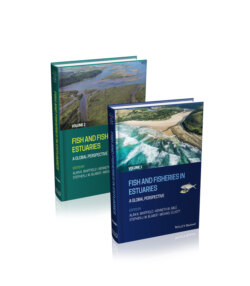Читать книгу Fish and Fisheries in Estuaries - Группа авторов - Страница 65
3.4 Adults and recruitment
ОглавлениеEstablishing a relationship between adult spawners and numbers of recruits has been an objective of fishery scientists and managers for decades (Cushing 1981, Rothschild 1986, 2000, Subbey et al. 2014), primarily to support fishery management and to document the status and trends in stock trajectories. Gaining an understanding of recruitment variability, its causes and degree of dependence on adult stock abundance is important to evaluate a stock's production potential and, for exploited species, to manage its fisheries, including those for estuarine species. These efforts often are confounded by high inter‐annual variability in reproductive success that is attributed to unpredictable and changing environmental factors (Myers 1998) that mask relationships of recruitment to parent stock.
While recruitment is often (usually) poorly related to adult stock, abundance and age structure of the spawning stock, especially at low stock abundance, can be a key factor controlling levels of recruitment (Myers 2001, Cury et al. 2014, Subbey et al. 2014, Houde 2016). Documenting a clear linkage between adult stock (numbers, biomass or fecundity) and recruit numbers has been elusive for most marine and estuarine species (Subbey et al. 2014, Szuwalski et al. 2015, Lowerre‐Barbieri et al. 2016, Somarakis et al. 2019, Sharma et al. 2019). In many cases, only at the lowest levels of adult stock abundance can recruitment be demonstrated to depend on spawner abundance or biomass (Hilborn & Walters 1992, Myers 2001). Furthermore, in many circumstances it is actually the abundance of adult stock that varies in its dependence on recruitment success (Szuwalski et al. 2015).
Intensive research has been directed at explaining dependence of recruitment on adult stock in the decades following development of stock‐recruitment models (Ricker 1954, Beverton & Holt 1957, Rothschild 1986, Myers 2001, Subbey et al. 2014) and continuing to the present day (Szuwalski et al. 2015, Sharma et al. 2019). Substantial knowledge has accumulated on scales and causes of recruitment variability, the role of environmental factors, role of adult stock and age structure and the effects of fishing. Understanding the relationship of recruitment to adult stock is not unique to fishes in estuarine ecosystems, but explaining and understanding causes of variability may be exacerbated in estuaries where a multitude of environmental and anthropogenic factors, in addition to fishing, act to modify stock‐recruitment relationships.
